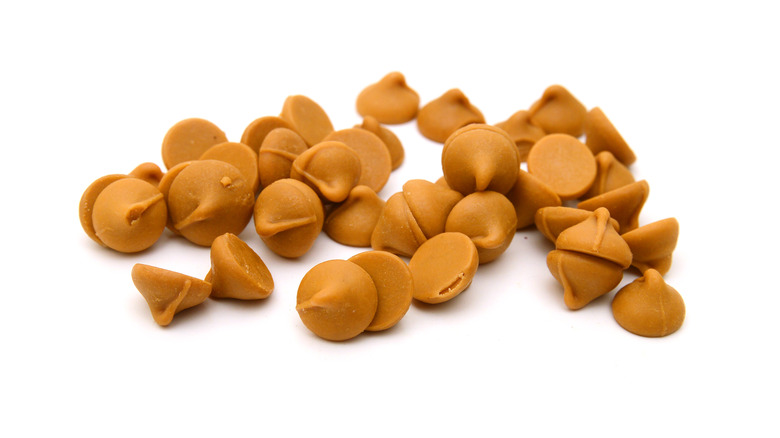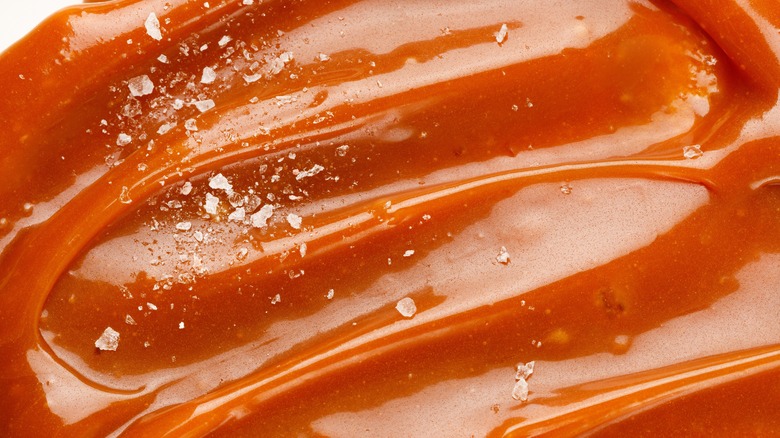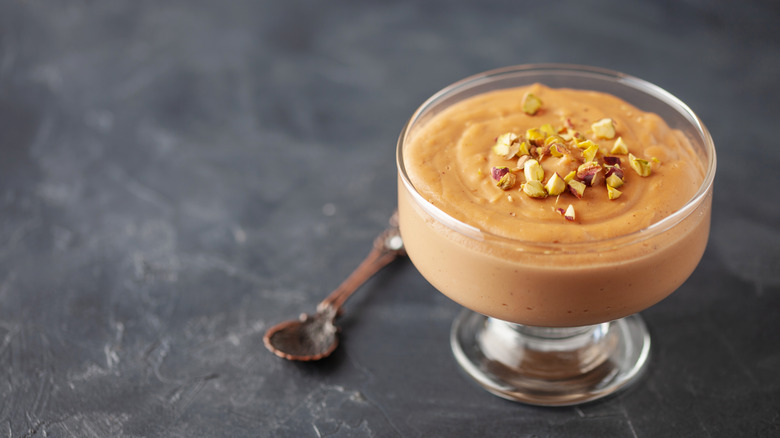Butterscotch Vs Caramel: What's The Difference?
You can add all sorts of substances to your baked goods that will give them a huge flavor boost. The almond flavors of frangipane and marzipan, the creamy richness of a good cheesecake, the sharp yet sweet bite of a lemon square – it's a long, long list. But one dessert ingredient seems to show up as much or more than any other (except maybe chocolate): caramel. This slightly burnt sugar liquid has a rich flavor that makes it a perfect addition to things like candy bars, which is why so many of them use it.
And hey, maybe you know caramel by another name. Butterscotch is the same thing, right? No, it turns out that it is not. While the two are conceptually similar and are made similarly, there's one massive difference between them: The core ingredients involved are entirely different because each uses a different kind of sugar.
Caramel uses white sugar, while butterscotch uses brown sugar
It seems obvious, but different types of sugars will produce different results. Both caramel and butterscotch are made by heating sugar slowly over time, causing it to break down and form new compounds as it turns brown and liquefies. But while the process may be the same, the result isn't, for a simple reason: Caramel uses white sugar, while butterscotch uses brown.
The brown sugar, brought on by the addition of molasses during the refining process, winds up giving butterscotch a much deeper flavor than you'd get from caramel. Additionally, butter is added to the process (hence the name), adding a richness you can't quite get with simple white sugar. Cream is often added to butterscotch to create an even fattier, more decadent sauce.
Because they're so similar in concept, though, you can still use caramel and butterscotch interchangeably. It's all about which you'd prefer in any given situation.
Toffee is similar to both caramel and butterscotch
A third sweet substance fits neatly into the same category as butterscotch and caramel. Toffee is made the same way as butterscotch — with the butter and brown sugar that gives it a deeper, richer flavor than caramel — but is heated in a slightly different way. While butterscotch gets cooked to 270-290 F, toffee keeps going, topping out at 295-310 F. The heat differential results in a more brittle, crackly substance (toffee is what Heath bars are made of) that tends to stick to your teeth.
Ultimately, you can use any of these three cooked-sugar substances in your baking and dessert endeavors — it's just all about knowing where and how to use them. Caramel, butterscotch, and toffee are all great, but each has different strengths and weaknesses. If you bear those in mind, your desserts will come out exactly as you planned.


